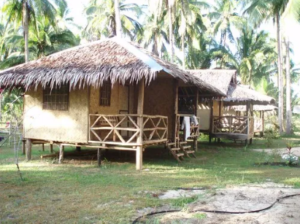The Philippines is a popular destination for expats looking for a change of scenery, and it’s not hard to see why. With its warm weather, friendly people, and affordable cost of living, it’s an attractive option for those looking to stretch their budget a little further. In this article, we’ll talk about the different types of budgets that expats tend to have when living in the Philippines and give you an idea of what you can expect to spend.
The Micro-Budget: Living on a Shoestring
Alright, so let’s talk about the micro-budget, also known as the shoestring budget. It’s basically a budget of $700 or less per month. It might not sound like much, but it’s definitely doable if you’re willing to make some sacrifices. However, we wouldn’t recommend it for everyone, especially if you have a family. Trying to support a wife or live-in girlfriend with kids will be highly challenging in most parts of the Philippines on less than $700 a month.
Living on a shoestring budget means you need to find ways to save money in every aspect of your life. You might have to rent a smaller and simpler apartment in a less desirable part of town. You might need to rely on public transportation or even a bike instead of owning a car or scooter. Eating out should be kept to a minimum, and you should aim to cook your own meals at home. You have to be mindful of your spending and stick to a tight budget to make it work.
If you’re a single person, this budget could work for you if you’re willing to make some changes. However, it’s not the lifestyle that most expats would prefer. It’s challenging to live on a shoestring budget, but it’s not impossible. Just remember that you might have to give up some luxuries to make it work.
To give you a better idea of what it takes to live on a shoestring budget, let’s dive into each aspect of your life and see where you can save money.
Housing:
 The biggest expense in your budget will be housing. You’ll need to look for a smaller and less luxurious apartment, and it might not be in the most desirable part of town. You might have to compromise on certain amenities, like having a washing machine or air conditioning. However, you can still make your space feel comfortable and cozy with some DIY hacks.
The biggest expense in your budget will be housing. You’ll need to look for a smaller and less luxurious apartment, and it might not be in the most desirable part of town. You might have to compromise on certain amenities, like having a washing machine or air conditioning. However, you can still make your space feel comfortable and cozy with some DIY hacks.
Transportation:
Owning a car or a scooter can be expensive, so you might have to rely on public transportation or a bike. This could be a great way to explore the city and stay active. Public transportation in most cities is affordable and reliable, and you can save money on gas and maintenance.
Food:
Eating out can quickly add up, so it’s essential to limit your dining out and cook your meals at home. Buy groceries in bulk, plan your meals, and cook in batches to save time and money. Eating healthy doesn’t have to be expensive, and you can still enjoy delicious and nutritious meals on a budget.
Entertainment:
Entertainment can be expensive, but there are still plenty of ways to have fun without breaking the bank. Look for free events and activities in your city, like concerts, art shows, and festivals. You can also explore nature, hike, bike, or swim in a nearby lake or river.
Shopping:
Shopping can be tempting, but it’s crucial to be mindful of your spending. You can save money by buying secondhand clothes, furniture, and household items. Thrift stores, garage sales, and online marketplaces like Craigslist and Facebook Marketplace are great places to find bargains.
Utilities:
Saving money on utilities is all about being mindful of your consumption. Turn off lights and unplug appliances when you’re not using them. Use fans instead of air conditioning, and take shorter showers to save water. You can also save money on your electricity bill by using energy-efficient light bulbs and appliances.

Healthcare:
Healthcare can be expensive, so it’s crucial to have health insurance. Make sure to shop around and compare different plans to find one that fits your budget. You can also save money on healthcare by taking preventative measures, like exercising regularly and eating a healthy diet.
Living on a shoestring budget is challenging, but it’s not impossible nor is it advised. The scenario described here assumes no major catastrophes such as serious illness or injury. You need to be prepared to make some sacrifices and be mindful of your spending. You might have to give up some luxuries, but you can still live a comfortable and fulfilling life.
The Intermediate Budget: Comfortable Living
Alright, let’s talk about the next level up in terms of budgeting – the intermediate budget! This range typically falls between $900 and $1,500 per month and offers a much more comfortable lifestyle than the micro-budget. This is the budget range the vast majority of expats I have met with since 2012 choose to live on.
With this kind of budget, you’ll be able to rent a decent apartment or even a small house in a better location. Plus, you might even be able to afford a scooter or motorbike, which can be a lifesaver when it comes to getting around the city.

Speaking of getting around, one of the best things about having an intermediate budget is that you can enjoy eating out at local restaurants and buying groceries from the supermarket without feeling like you’re breaking the bank. Plus, you can even treat yourself to a few nights out each month without worrying too much about the cost. Given the cost of living in the Philippines, with this intermediate budget you won’t have to stress about ongoing expenses and a few trips to other islands every now and then.
Of course, if you’re living as a family, you’ll need to budget a little more than this. It’s important to remember that expenses can add up quickly when you’re supporting more than one person. You’ll need to factor in things like schooling expenses, healthcare costs, and entertainment activities for the whole family.
All in all, the intermediate budget is a great option for those who want to live comfortably without overspending. With a little bit of planning and smart budgeting, you can enjoy a fulfilling lifestyle without worrying too much about money.
The Luxury Budget: Living the High Life

Alright, if you’re looking to live a high life in the Philippines, you’ll need to budget around $1,900 or more per month. This kind of budget will allow you to live a fancy western-style lifestyle, eat out at fancy restaurants regularly, have a private driver, and even own your own car. You’ll be able to rent a spacious house or condo in a prime location, and you’ll have plenty of disposable income to travel around the country or indulge in your hobbies.
However, it’s important to keep in mind that this budget might not be realistic for everyone. Unless you have a substantial amount of savings or a high-paying job in the Philippines, it might be tough to maintain this kind of lifestyle long-term. It’s essential to be realistic about your budget and only spend what you can afford.
That being said, if you do have the means to live a luxurious life in the Philippines, there’s no shortage of things to do and see. You can indulge in the local cuisine at fancy restaurants, travel to different parts of the country, and even take up some new hobbies. And with your own car or private driver, getting around the city will be a breeze.
Of course, it’s important to budget carefully and make sure you’re not overspending. Living the high life can be fun, but it’s not worth it if you’re constantly worrying about money. It’s better to be realistic about your budget and make sure you have enough savings to cover any unexpected expenses that might come up.
All in all, living a luxurious lifestyle in the Philippines is definitely doable with the right budget. Just make sure you’re being realistic about your finances and only spending what you can afford. With some careful planning and smart budgeting, you can enjoy all that the Philippines has to offer without breaking the bank.
Earning an Income in the Philippines

First things first, it’s important to understand that while it’s possible to live off your savings for a while, it’s not a sustainable option in the long run. Eventually, your savings will run out, and you’ll be left with nothing. That’s why having a steady stream of income is crucial for a comfortable and stress-free life in the Philippines.
If you’re thinking about finding work in the Philippines as a foreigner, there are a few things you should know. First off, it’s important to manage your expectations because it can be pretty tough to find employment in the country as a non-citizen.
One of the biggest challenges you might face is the low wages that most jobs in the Philippines offer. In fact, it’s not uncommon for workers to earn less than $10 a day. That might not sound like a lot of money, especially if you’re used to earning more in your home country, but keep in mind that the cost of living in the Philippines is generally lower than in many other places. Trying to live off this type of wage means you’d have a budget under $500 per month. Most locals do this by living with family to cut down their expenses, which is not an option in your case.
Of course, if you’re going to be working in the Philippines, you’ll need to have a work visa. That’s because the country has laws in place that require employers to sponsor the visas of any non-citizen workers they hire. That means you’ll need to find a job with a Philippine company that’s willing to sponsor your visa in order to legally work there.
Now, finding a job in the Philippines can be a challenge, especially for foreigners. That’s partly because the job market in the country is pretty competitive, with lots of locals vying for the same positions. Plus, there are some industries where it’s difficult for non-citizens to find work at all, such as certain government positions.
Another thing to keep in mind is that, as a foreign worker in the Philippines, you’ll need to have some basic language skills in order to communicate with your colleagues and clients. While English is widely spoken in the country, it’s still a good idea to learn Tagalog, Bisayan or another local language in order to better integrate into the workplace and society as a whole.
Types of income for living abroad
So, what are the common income streams available to expats in the Philippines? Let’s take a closer look.
Retirement Pension
One of the most common income streams for expats in the Philippines is a retirement pension. Many expats choose to retire in the Philippines because of the low cost of living, beautiful scenery, and welcoming culture. If you’re receiving a retirement pension, you can easily transfer it to a Philippine bank account and start living the dream.
Dividends from Investments
Another income stream available to expats is dividends from investments. If you have investments in your home country, you can receive regular dividends, which can be transferred to your Philippine bank account. It’s important to note that you may be subject to taxes on your investment income, so it’s best to consult with a financial advisor to ensure you’re compliant with local tax laws.
Real Estate Income
If you own property in your home country, you can rent it out and receive a steady stream of income. Many expats choose to rent out their homes or apartments and use the income to fund their life in the Philippines. It’s important to have a property manager or someone you trust to manage your property and ensure it’s being properly maintained and rented out.
Remote Work
With the rise of the digital nomad lifestyle, many expats are choosing to work remotely from the Philippines. This allows them to earn a steady income while enjoying the beauty and culture of the country. There are many online jobs available, from freelance writing to graphic design, that can be done from anywhere in the world. It’s important to have a reliable internet connection and a quiet workspace to ensure you can work efficiently.
Online Jobs Websites
Here are a few of the many sites which offer employment remotely. Again, choose an area of the Philippines that does not have constant power outage issues and has good internet available. It is also highly advisable that you work and create savings from this remote job PRIOR to moving to the Philippines. This will give time to adjust if you don’t like the job and need to secure a new one.
Flexjobs.com
Ziprecruiter.com
Weworkremotely.com
Remote.co
Why You Need a Steady Income
Now that we’ve explored the income streams available to expats in the Philippines, let’s discuss why it’s important to have a steady source of income. Here are a few reasons:
- Cost of Living
While the cost of living in the Philippines is relatively low compared to other countries, it’s still important to have a steady income to cover your expenses. You’ll need to budget for housing, food, transportation, healthcare, and other expenses. Without a steady income, you may find it difficult to make ends meet.
- Emergencies
Emergencies can happen at any time, and it’s important to have the financial resources to handle them. Whether it’s a medical emergency or unexpected home repair, having a steady income can help you cover the costs without depleting your savings.
- Retirement
If you’re retired, having a steady income is crucial to maintaining your lifestyle. You’ll want to enjoy your retirement years without worrying about money. A retirement pension or investment income can provide a reliable source of income for the rest of your life.
- Long-Term Goals
Whether you’re saving for a child’s education or planning a dream vacation, having a steady income can help you achieve your long-term goals. Without a steady income, some simple math will tell you how long you can survive in a foreign land before you have nothing left to live on. So be sure to have a plan in place for steady income.
Author: Reekay V.
Since 2012 I’ve been traveling through various islands of the Philippines as a full-time Expat and spent 1999 living in Vietnam.
Share with me my ongoing adventures of life in the Philippines. Hopefully you find my observations helpful in your own adventures.
— Reekay

